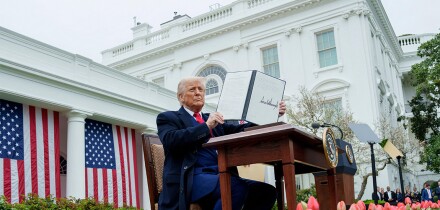Convertible bonds in China have recently become popular among Chinese issuers and foreign investors. They offer unique features such as low conversion premiums, conversion price annual resets and commercial bank-guaranteed payments. These features reflect the different objectives of Chinese issuers as well as the unique characteristics of China's stock market, making them interesting investment alternatives to China stocks.
Equity Offering Equivalent
It is critical to note that a convertible bond offering in China is essentially a common stock offering. For historical reasons, only around one-third of the total shares of China's listed companies trade on the exchange, with the rest of the shares held by one or a few state-owned investors in which shares are not tradable. The largest shareholders are not as sensitive to share price and ownership dilution as smaller holders of the listed shares and they have the ability to vote in bigger blocks to approve convertible-bond offers.
But why do issuers prefer convertible offering to straight equity or rights offering? In China, equity offerings are subject to a complex and time-consuming regulatory approval process, whereas convertible bonds are treated more as debt from a regulatory point of view. Chinese companies have reportedly found convertible bonds easier to launch than share-purchase rights or additional share offerings. Additionally, the convertible bond floor (and other features discussed in details below) attracts investors, which results in less underwriting risk as compared to common stock offerings.
Low Conversion Premium/ Conversion Price
The low conversion premium in Chinese convertible bonds illustrates the stock offering essence. The "Implementing Measures for Convertible Bond Offerings by Listed Companies" issued by China Securities Regulatory Commission (CSRC) states a conversion price shall be the 30-day average trading price of the stock prior to the offering plus a certain premium. With full discretion to set the pricing terms, Chinese issuers and underwriters have typically set the conversion premium at about 0.1%. Furthermore, the "Provisional Measures on Administration of Corporate Convertible Bonds," approved by China's State Council in 1997, permits issuers to set a conversion price at a discount to the spot stock price, if the issuer is a major state-owned enterprise (SOE).
As a result, most convertible bonds in China have a conversion price only slightly higher than the stock price at issue date. For convertible bond investors, the stock price does not need to appreciate much before it is economic to convert. By contrast, many U.S. issuers look for structures to achieve high conversion premium to limit potential dilution. They intentionally issue convertible instruments that are extremely debt-like, with features such as contingent conversion to make conversion unlikely. Furthermore, many U.S. issuers have been purchasing call spreads concurrently with convertible offering to increase the effective conversion premium and to reduce dilution.
Conversion Price Annual Reset
In addition, many convertible-bond issues in China empower the issuers to reset conversion price downward annually if the price of the shares falls significantly. This reset feature offers investors more shares if the stock price declines, with the goal of keeping the bond's conversion value at par.
They are similar to the reset convertible bonds that were popular in Japan in mid-1990s, when Japanese banks were considered risky as they had large real estates exposure. To raise capital, equity issuance was out of the question since the stock markets were depressed. The reset feature was included in Japan's convertible bonds to give investors some sort of insurance against bank's stock decline. Similarly, the reset feature in China protects investors against a significant stock price drop because it aims to keep the conversion option in the money when the stock price declines significantly.
The reset feature on the conversion price makes the convertible bond more valuable to investors. Due to stock price fluctuations, this feature is difficult to value because the conversion price reset at a certain time is also determined by the past history of the stock price, hence it is path dependent. In the case of the Chinese convertible bonds, however, pricing difficulty may give way to non-economic considerations, namely, many convertible bond offerings are intended to result in common stock issuance. Together with low conversion premiums, the conversion price reset significantly increases the likelihood the bonds will be converted into shares at some point. (Continued on page 10)
Financial Innovation Discount
Convertible bonds are still new to China's stock markets as well as to Chinese investors. For instance, China's convertible bond offering rules require higher ROE and earnings strength for convertible offerings than normal common stock or debt issues.
Additionally, most convertible bonds also provide investors extra coupon compensation at maturity if the convertible bond is not converted into shares. Similar to the premium put feature seen in other Asian regions, such extra coupon payments at maturity (if there is no conversion) attract investors with a high yield-to-maturity.
Furthermore, the coupon and principal repayments are usually guaranteed by commercial banks. Such credit support is typically used to enhance the credit profile of convertible issues, to lower the coupon or increase conversion premiums. But that's clearly not the case in China. Instead, the commercial bank guarantee, the higher ROE requirement and the extra coupon compensation are a form of "financial innovation discount." They provide additional value to investors to make them comfortable investing in convertible bonds, a relatively unfamiliar investment vehicle in China.
Conclusion
Convertible bonds in China have unique features reflecting the characteristics of China's regulatory system and stock market. They are more akin to equity offerings because of their low conversion premiums. The low conversion premium and conversion price annual reset features make it highly likely that the convertible bonds will be converted into shares. Additional investor-friendly features, such as extra coupon compensation and commercial bank guarantee, are added to encourage investors' participation in what is a new investment product for China. Combining low conversion prices and solid bond floors, China's convertible bonds provide an alternative approach for investors seeking exposure to China stocks.
This week's Learning Curve was written by Winston Ma, CFA, a financial products structurer in the products and solutions group at JPMorgan in New York.






